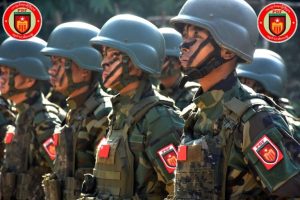
Yangon, formerly known as Rangoon, is the largest city and the commercial hub of Myanmar (Burma). Located in the southern part of the country, it serves as an important cultural, economic, and political center. Despite Naypyidaw being the capital of Myanmar, Yangon remains the most populous and influential city, with a rich history and a blend of modern and colonial architecture.
Key Features of Yangon:
- Historical Significance: Yangon has a long history that dates back to the 11th century, when it was originally a small fishing village. It became a major port in the British colonial period and served as the capital of Myanmar until 2005, when the capital was moved to Naypyidaw.
- Cultural Heritage: The city is home to several important Buddhist landmarks, including the Shwedagon Pagoda, which is considered one of the most sacred places for Buddhists. Other notable religious sites include the Sule Pagoda, Chaukhtatgyi Pagoda, and numerous temples and monasteries.
- Architecture: Yangon showcases a diverse mix of architectural styles, ranging from colonial-era buildings, such as the City Hall, Customs House, and Secretariat, to modern structures. The colonial influence is particularly evident in the city’s downtown area, where many old buildings remain, reflecting the British colonial era.
- Economy: While Myanmar is an agricultural-based economy, Yangon stands as the commercial and industrial heart of the country. It is home to a wide variety of businesses, from textile and manufacturing industries to service-based sectors like banking, telecommunications, and tourism. The port of Yangon is vital for international trade.
- Transportation: The city has a network of buses, taxis, and rickshaws, but traffic congestion can be a problem. Yangon also has an airport, Yangon International Airport, which is the main gateway to Myanmar for international flights.
- Climate: Yangon has a tropical monsoon climate, with a hot and humid period from March to May, followed by a rainy monsoon season from June to October. The cooler months from November to February are more pleasant for visitors.
- Parks and Green Spaces: Despite being a busy urban center, Yangon has several parks and green spaces like Kandawgyi Lake and Inya Lake, providing residents and visitors with places for relaxation and outdoor activities.
- Food and Markets: The city is known for its vibrant street food scene, including dishes like Mohinga (a fish noodle soup), Tea Leaf Salad (Lahpet), and Burmese curries. The local markets, such as the Bogyoke Aung San Market, are famous for offering a range of goods, from traditional handicrafts to jewelry and clothing.
Modern Challenges:
While Yangon is rapidly developing, the city faces challenges such as infrastructure development, poverty, and political instability. Traffic congestion is another growing issue, as the population continues to expand.
Overall, Yangon is a city where tradition and modernity intersect, making it a fascinating place to explore. Its unique mix of cultural heritage, colonial architecture, and growing modern infrastructure reflect the dynamic changes taking place in Myanmar.





